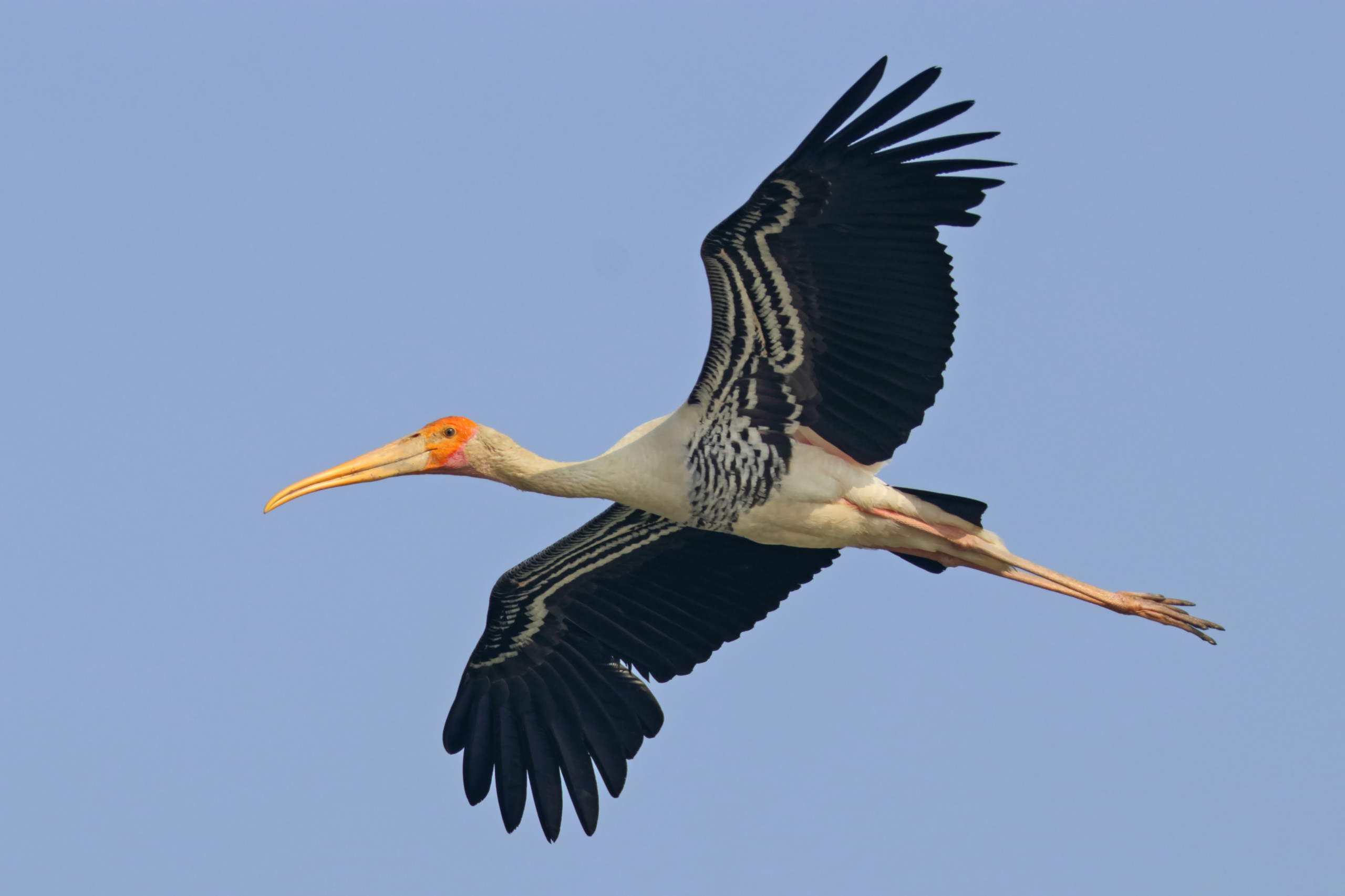LINKED PUBLICATION
The Painted Stork: Ecology and Conservation. Urfi, A.J. 2011. Springer, NY. DOI: 10.1007/978-1-4419-8468-5 VIEW
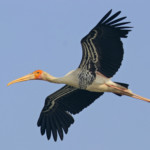 Nesting colonies of stork, ibis, spoonbill, cormorant, egret etc, known as heronries, represent a concentration of nesting effort in space and time. Precisely due to this reason they are often vulnerable to exploitation. Bear in mind, heronries provide an irresistible chance to obtain meat and eggs which can sometimes be survival needs for some indigenous communities. Add to this the fishy odours and noise (of chicks) emanating from them, and there is all the potential for making them repugnant. No wonder heronries have been written about in disparaging terms. They were once referred to as ‘rookeries’ – a reference to noisy, boisterous colonies of rooks, in early ornithological literature. In fact, ‘rookery’ was a slang term for urban slums in Victorian England.
Nesting colonies of stork, ibis, spoonbill, cormorant, egret etc, known as heronries, represent a concentration of nesting effort in space and time. Precisely due to this reason they are often vulnerable to exploitation. Bear in mind, heronries provide an irresistible chance to obtain meat and eggs which can sometimes be survival needs for some indigenous communities. Add to this the fishy odours and noise (of chicks) emanating from them, and there is all the potential for making them repugnant. No wonder heronries have been written about in disparaging terms. They were once referred to as ‘rookeries’ – a reference to noisy, boisterous colonies of rooks, in early ornithological literature. In fact, ‘rookery’ was a slang term for urban slums in Victorian England.
While collecting material for my book on Painted Stork, I discovered that the literature on local people’s attitudes towards heronries recorded in India was a mixed bag of anecdotes and perceptions. In my book, the section Koonthangulam narratives is replete with interesting instances.
Koonthangulam is an Important Bird Area (IBA) in south India, where Painted Stork nest in sizeable numbers. An observer in British India by the name of Rhenius, writing in 1907, observed, ‘The villagers look on these birds as semi-sacred and will not allow anyone to disturb or molest them, so they return to build there year after year, and have done so for years past’.
In 1945, almost a half century later, a report by Webb-Peploe from the same site said, ‘The noise and the smell caused some of the villagers to suggest destroying the nests and driving the birds away some years ago, but the head-men of the village protect them’. And in 1961, another report from this site, this time by Wilkinson, seemed to suggest that the locals held the birds in high esteem. According to the report, ‘The headmen of the village still protect the birds and their women-folk spoke with scorn of a village of which they had heard where the people had so ill-treated their birds that ‘not even a sparrow is to be found there now!’.
So, in the context of the conservation of heronries in India lying outside the protected areas network, local people’s attitudes are important.
The Painted Stork, listed as near threatened, nests in colonies across India. Its threat factors include, besides habitat destruction, molestation by local communities and theft of eggs or chicks from nests. In this context, Kokkre Bellur, literally ‘stork village’, seems to be special in that Painted Stork and other species of colonial waterbirds have been nesting here on trees in the village premises for over a century, seemingly benefitting from the protective sentiments of the local community. Given that at other colonial waterbird nesting sites in India, the attitudes of local villagers may not necessarily always be benign, one can ask the question – is people’s protective attitude towards the nesting birds really a factor at Kokkare Bellur?
The last time I visited Kokkre Bellur was in February of 2019 when I attempted to initiate field studies on the nesting ecology of Painted Stork in south India. Here, I was immediately struck by the enormous variability of colony sizes and the height of trees used as a nesting substrates by the Painted Stork during their nesting season, which lasted from January to May. We counted 51 colonies of various sizes. Some of the nesting colonies were quite large in that they had over 60 nests. However, these large colonies, located on huge trees with correspondingly large canopies, were just a few (only two) in number.
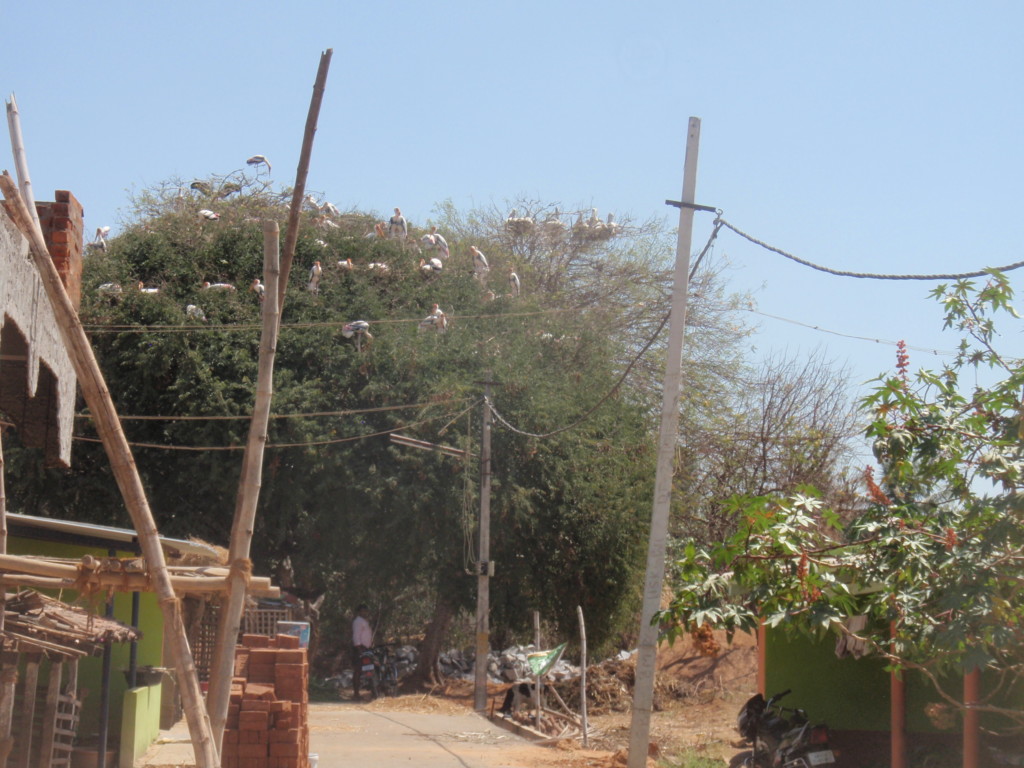 Figure 1 One of the large Painted Stork colonies at Kokkre Bellur with nests located over 9 meters from the ground. Such large colonies are few in number (Photo: A J Urfi).
Figure 1 One of the large Painted Stork colonies at Kokkre Bellur with nests located over 9 meters from the ground. Such large colonies are few in number (Photo: A J Urfi).
However, a sizeable number of colonies at Kokkre Bellur, were located on small trees which were just a few meters tall – in the village. One such colony in the vicinity of human settlements, with just 3-4 nests, is pictured here (Figure 2). The bottom line is that at Kokkre Bellur, some Painted Stork nests were positioned dangerously low, on trees that could be easily reached by anyone from the ground.
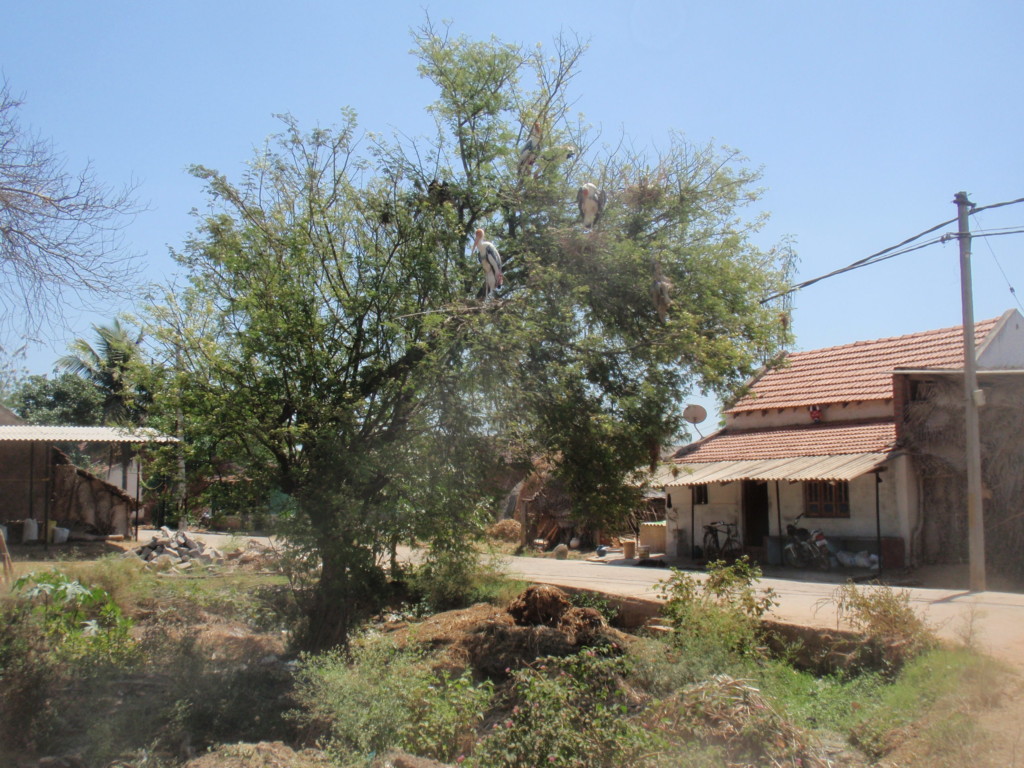 Figure 2 Nesting dangerously low! The nests are located barely 3-4 meters above ground level and can be easily reached by locals, whose houses can be seen in the picture: yet the nests remain unmolested. Note the differences in the height and canopy of nesting substrate (trees) between this colony and the one in Figure 1 (Photo: A J Urfi).
Figure 2 Nesting dangerously low! The nests are located barely 3-4 meters above ground level and can be easily reached by locals, whose houses can be seen in the picture: yet the nests remain unmolested. Note the differences in the height and canopy of nesting substrate (trees) between this colony and the one in Figure 1 (Photo: A J Urfi).
The literature on nesting substrate selection by Painted Stork throughout India, reviewed in my book, suggests some clues but no definitive answers. From an ornithological viewpoint, our starting premise is that in colonial waterbird nesting, nest content losses through predation by agents from the air (chiefly raptors) or the ground (reptiles, mammals etc) have been an important force in the evolution of avian coloniality and nest site selection (see references). Exploitation by humans, for eggs or meat, is also probably a factor, though more recently realised.
We find two types of nesting site usage by Painted Stork, and examples of both have been well documented. The first is the tendency to nest on islands in marshes, water storage tanks in villages, urban ponds etc., often on clumps of trees, which can be quite low in height (in fact, at some sites, our observation nests were quite close to the water itself). It is clear that this type of nesting is adaptive, a protection against ground predation due to the existence of a water barrier. The second type of nesting is to take advantage of height to ward off ground level predation and to build nests on trees that are quite high. While this may or may not be a perfect solution for protection against all natural predators (say monkeys) it certainly would be a deterrent for humans climbing on trees and extracting the nest contents.
Conclusion and recommendations
At Kokkre Bellur, nesting on low trees is one indication that the local people’s protective attitudes are real and the birds seem to be cognizant of it. Given that Painted Stork and other birds continuing to nest at Kokkre Bellur is entirely thanks to the protective attitude of locals, there is a need to encourage this trend by providing greater incentives to the local villagers. There is also a need for conservation monitoring of heronries by seeking greater community participation.
The only detailed study on the socio-economic profile of Kokkre Bellur village, which has documented all the instances of people’s protective attitudes towards the nesting birds, is more than two decades old (Manu & Jolly, 2000). Therefore, there is a need to conduct fresh studies to understand if people’s attitudes, in light of overall changes in an increasingly inter-connected world with mobile telephones, social media, and the changing aspirations of local communities etc , are changing and in what ways.
Even though Painted Stork select some low trees for nesting at Kokkre Bellur, are they really the best substrate for nesting purposes? A detailed study that models nesting success by estimating a host of covariates, as attempted by us for Painted Stork colonies in the Delhi region, could provide answers.
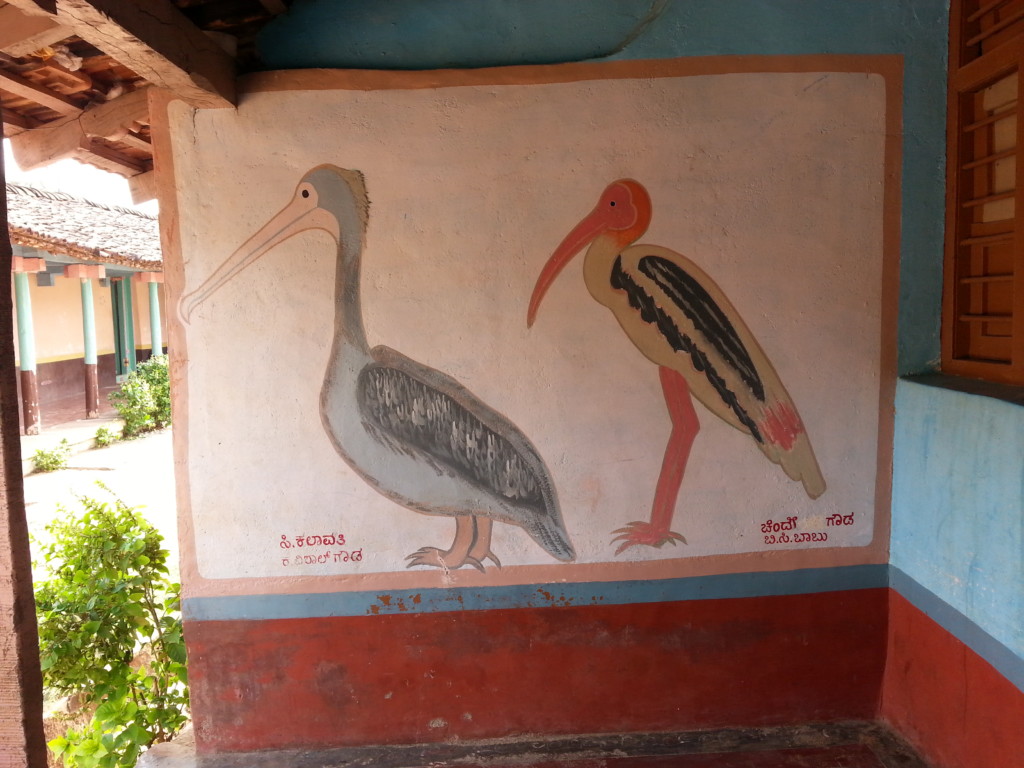 Figure 3 The nesting birds at Kokkre Bellur, notably Grey Pelican and Painted Stork, enjoy enormous goodwill among the local people. A local building has a drawing of these birds on its walls (Photo: Bharat Bhushan Sharma).
Figure 3 The nesting birds at Kokkre Bellur, notably Grey Pelican and Painted Stork, enjoy enormous goodwill among the local people. A local building has a drawing of these birds on its walls (Photo: Bharat Bhushan Sharma).
References
Brown, C.R. & Brown, M.B. 2001. Avian coloniality, progress and problems. (Eds, V. Nolan, E. Ketterson & C. F. Thompson). Current Ornithology, 1-82. Kluwer Academic/Plenum Publishers, New York.
Manu, K. & Jolly, S. 2000. Pelicans and People: The two-tier village of Kokkare Bellur, Kalparviksh (Delhi, India). International Institute for Environment and Development (IIED), London.VIEW
Tiwary, N.K. & Urfi, A.J. 2016. Nest Survival in Painted Stork (Mycteria leucocephala) colonies of North India: The Significance of Nest Age, Annual Rainfall and Winter Temperature. Waterbirds 39: 146-155.VIEW
Urfi, A.J. 2020. Indian heronries need conservation monitoring. Nature India VIEW
Image credit
Top right: Painted Stork Mycteria Leucocephala Charles J. Sharp, CC BY-SA 4.0, via Wikimedia Commons



